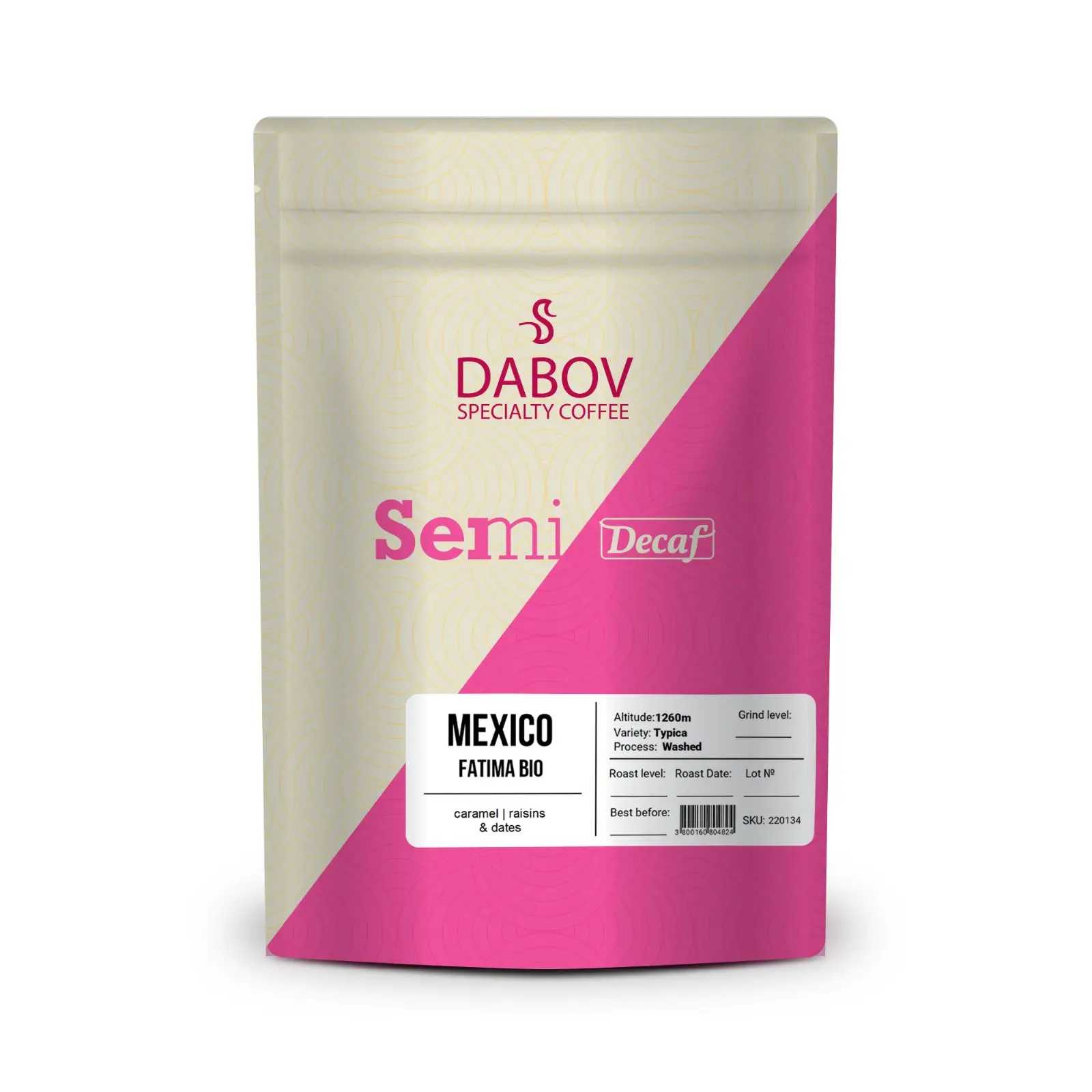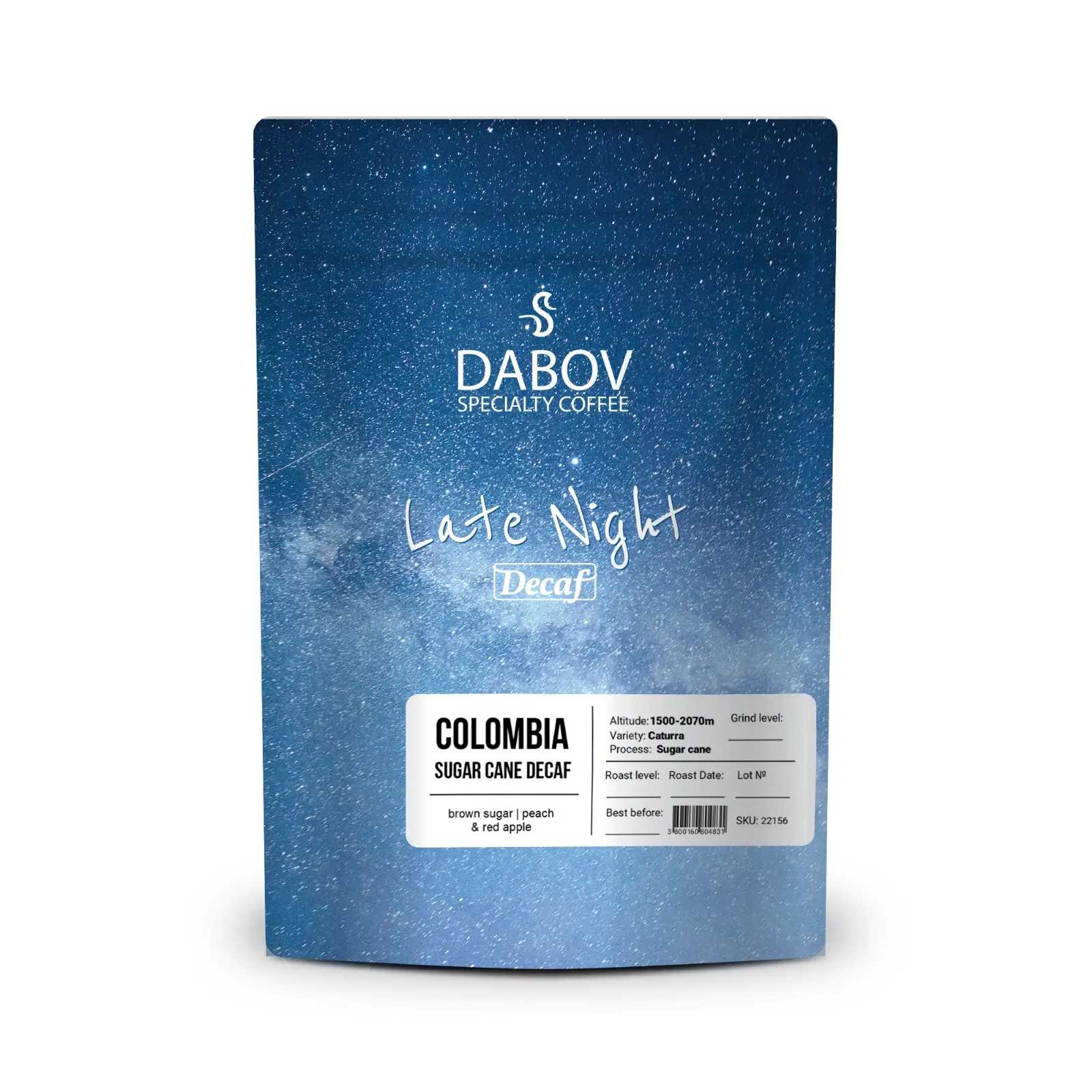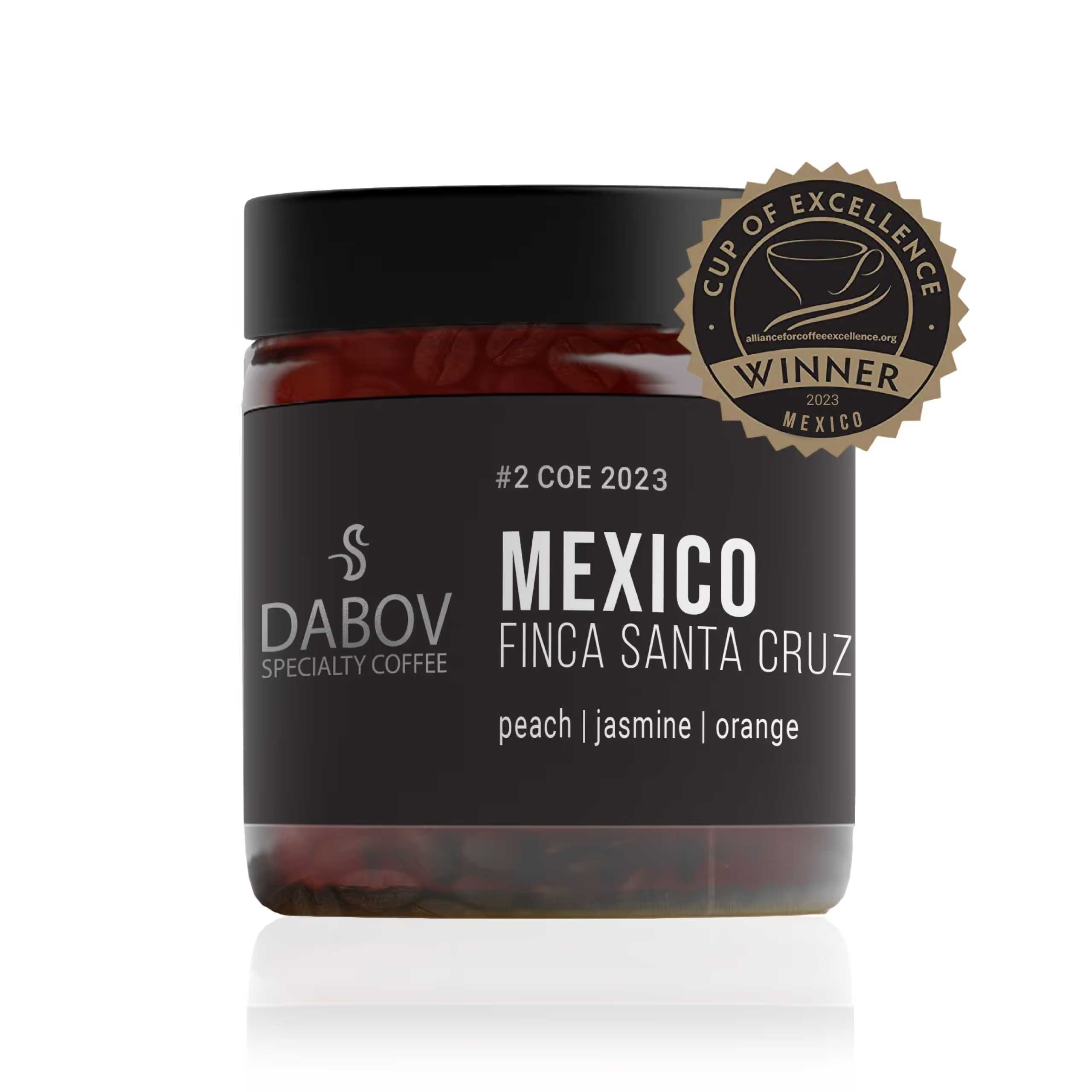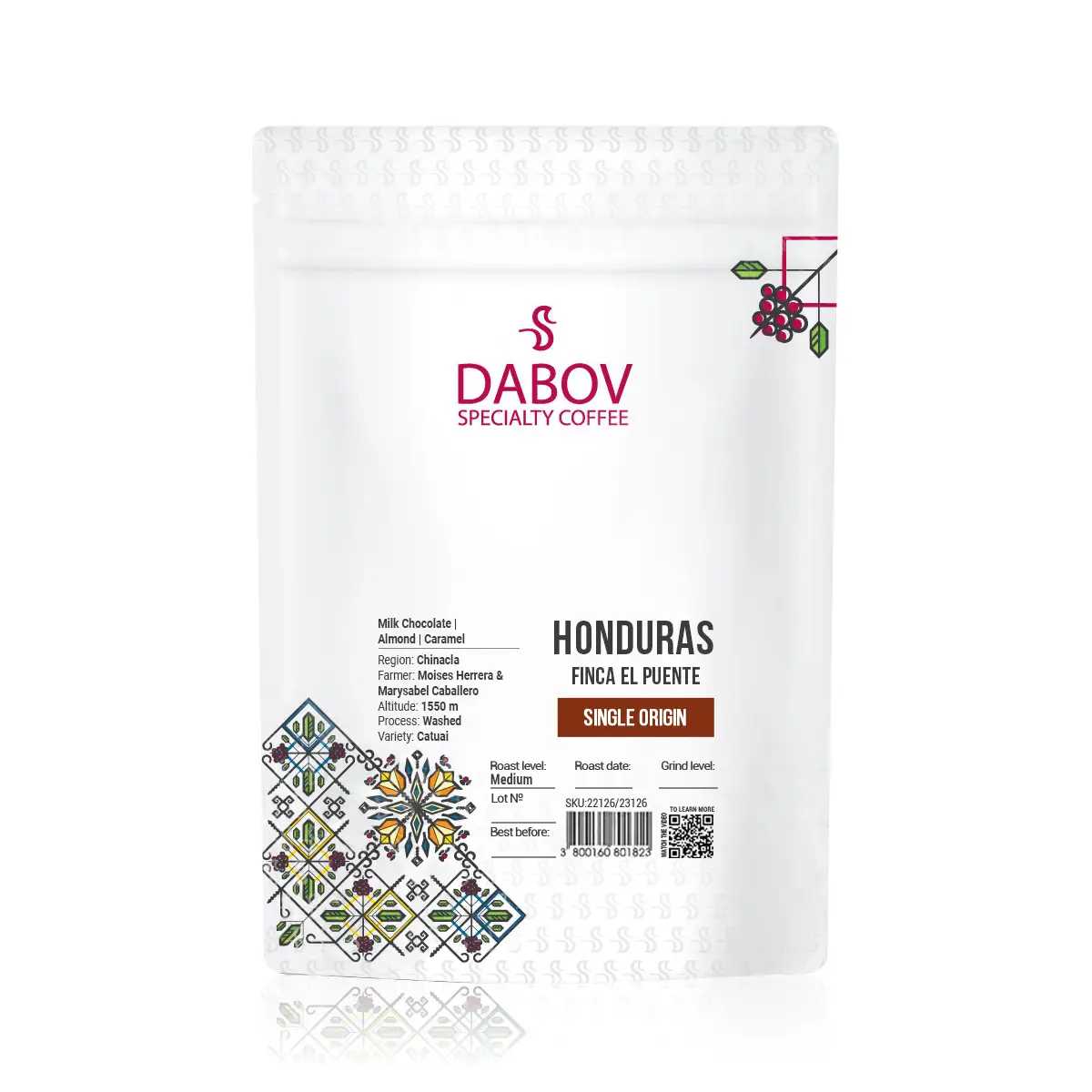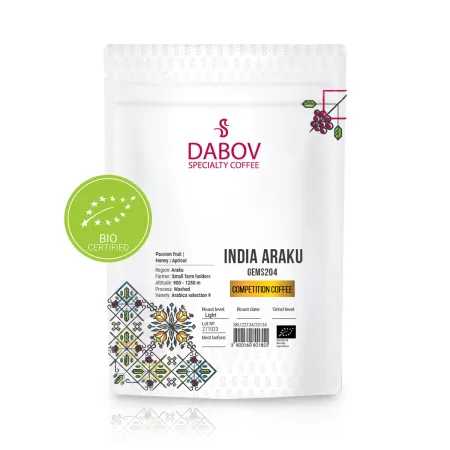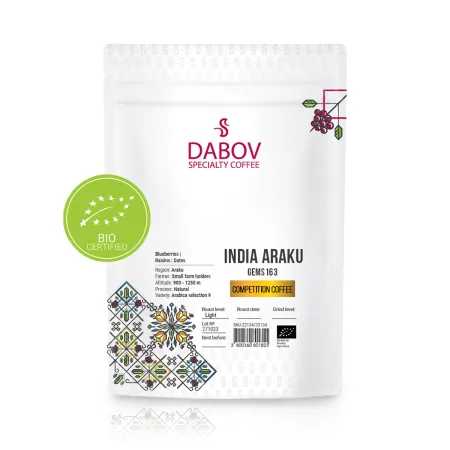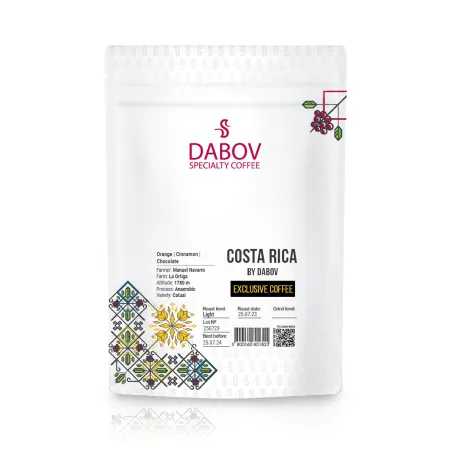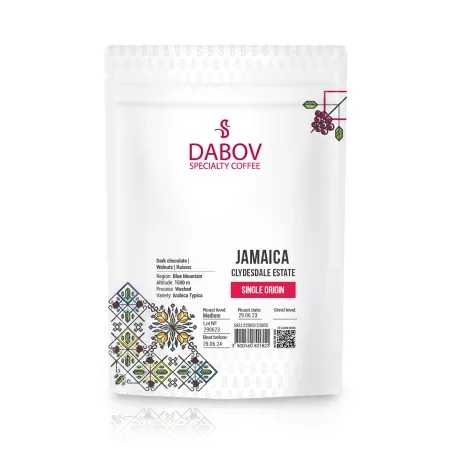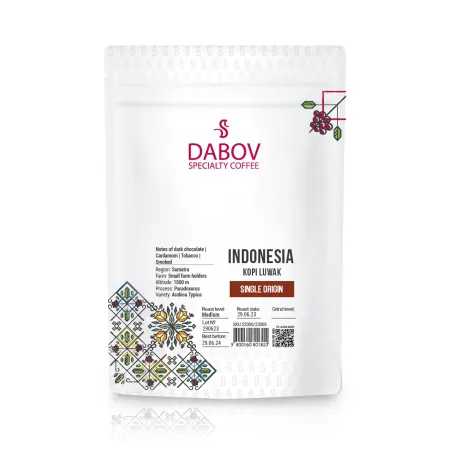The Ripple Effect of Coffee Prices From Farm to Consumer
Coffee isn't just a morning addiction; it's a global economic powerhouse. This article breaks down the intricate journey of coffee, from farm to cup, highlighting how price fluctuations impact everyone from farmers to consumers. Explore the essential players in the coffee supply chain and understand the driving forces behind coffee pricing. Delve into market trends affected by climate change and consumer preferences, and see how these factors create a ripple effect that influences daily choices. By the end of this article, you'll grasp not only the economics of coffee but also the importance of conscious consumerism in promoting sustainability and fair trade practices in the coffee industry.
Introduction
Coffee, the aromatic elixir that fuels millions of people worldwide, is more than just a beloved beverage. It's a global commodity that plays a crucial role in the economies of numerous countries and impacts the lives of countless individuals along its journey from farm to cup. The coffee industry is a complex web of interconnected stakeholders, each affected by the ebb and flow of coffee prices in unique ways. This article aims to unravel the intricate relationship between coffee prices and the various players in the market, exploring how fluctuations ripple through the supply chain and ultimately influence consumer behavior.
As we embark on this exploration, we'll delve into the multifaceted world of coffee economics, examining the factors that drive price changes and the consequences these shifts have on everyone from small-scale farmers in remote mountainous regions to urban coffee enthusiasts sipping their lattes in bustling city cafes. By understanding the ripple effect of coffee prices, we can gain a deeper appreciation for the beverage we consume and the global network that brings it to our tables.
1. The Coffee Supply Chain: An Overview
1.1 From Farm to Cup
The journey of coffee from its origin to your morning brew is a fascinating odyssey that spans continents and involves numerous stages of processing and transformation. This complex supply chain begins in the coffee belt, a region between the Tropics of Cancer and Capricorn where climate conditions are ideal for coffee cultivation. Here, farmers nurture coffee plants, carefully tending to them until the cherries are ripe for harvesting.
Once harvested, the coffee cherries undergo initial processing, which can vary depending on the method used (wet or dry processing). This crucial step removes the fruit flesh from the beans and prepares them for the next phase of their journey. After processing, the green coffee beans are sorted, graded, and packed for export. This is where international coffee traders enter the picture, purchasing large quantities of green beans and facilitating their transport to importing countries.
Upon arrival at their destination, the green beans are purchased by coffee roasters. These artisans of flavor use their expertise to roast the beans, bringing out the complex flavors and aromas that coffee lovers crave. The roasted beans are then packaged and distributed to various retail outlets, including supermarkets, specialty coffee shops, and online stores.
Finally, the coffee reaches its ultimate destination – the consumer. Whether brewed at home or prepared by a skilled barista, the final product is the culmination of a long and intricate process involving numerous individuals and entities across the globe.
1.2 Key Players in the Coffee Supply Chain
The coffee supply chain is a complex ecosystem comprising various stakeholders, each playing a vital role in bringing coffee from farm to cup. Understanding these key players and their responsibilities is crucial to grasping the intricacies of coffee pricing and its far-reaching effects.
At the foundation of the supply chain are the coffee farmers. These individuals and families, often working small plots of land in developing countries, are responsible for cultivating and harvesting coffee cherries. Their work is labor-intensive and subject to numerous challenges, including unpredictable weather patterns, pest infestations, and market price fluctuations. The decisions made by farmers regarding cultivation practices, harvest timing, and processing methods have a significant impact on the quality and quantity of coffee produced.
Next in line are the exporters, who play a crucial role in bridging the gap between coffee-producing regions and the global market. Exporters purchase coffee from farmers or cooperatives, handle the necessary paperwork for international trade, and arrange for the transportation of green coffee beans to importing countries. Their expertise in quality control, market trends, and logistics is essential for ensuring that coffee reaches its destination in optimal condition.
Coffee roasters are the alchemists of the coffee world, transforming the raw green beans into the aromatic brown beans we recognize. Roasters must have an intimate understanding of coffee varieties, origins, and flavor profiles to create the perfect roast. They often develop proprietary blends and roasting techniques to differentiate their products in a competitive market. Additionally, many roasters are increasingly involved in direct trade relationships with farmers, influencing pricing and quality standards at the source.
Retailers, including supermarkets, specialty coffee shops, and online stores, serve as the final link between roasted coffee and consumers. They play a crucial role in educating customers about different coffee varieties, brewing methods, and sustainability practices. Retailers also influence consumer preferences through their product selection, pricing strategies, and marketing efforts.
Lastly, consumers are the driving force behind the entire coffee industry. Their preferences, purchasing habits, and willingness to pay for certain attributes (such as organic or fair trade certifications) have a significant impact on market trends and, consequently, on pricing throughout the supply chain.
2. Coffee Pricing Guide
2.1 Understanding Coffee Pricing Dynamics
The pricing of coffee is a complex interplay of numerous factors, each exerting its influence on the final cost of your daily cup. To truly comprehend the ripple effect of coffee prices, it's essential to delve into these multifaceted dynamics that shape the market.
At the most fundamental level, coffee pricing is influenced by the basic economic principles of supply and demand. When coffee production exceeds demand, prices tend to fall, and vice versa. However, the reality is far more nuanced, with several additional factors coming into play.
One of the most significant factors affecting coffee prices is the cost of cultivation. This encompasses a wide range of expenses, including labor, fertilizers, pesticides, and equipment. In many coffee-producing regions, labor costs have been rising due to increased competition from other industries and urbanization trends. Additionally, the push for more sustainable and environmentally friendly farming practices often leads to higher production costs, which can translate to higher prices for consumers.
Transportation costs play a crucial role in coffee pricing, especially given the global nature of the coffee trade. Fluctuations in fuel prices, shipping rates, and potential disruptions in transportation routes can all impact the final price of coffee. For instance, the recent global supply chain disruptions caused by the COVID-19 pandemic have led to increased shipping costs, putting upward pressure on coffee prices.
Climate change and weather patterns have become increasingly significant factors in coffee pricing. Coffee plants are particularly sensitive to temperature and rainfall, and changes in climate can have dramatic effects on yield and quality. Extreme weather events, such as droughts or frost, can devastate coffee crops, leading to supply shortages and price spikes. The growing frequency and intensity of these events due to climate change have introduced a new level of uncertainty and volatility to coffee pricing.
Market speculation also plays a role in coffee pricing. As coffee is traded as a commodity on global exchanges, speculative activities by traders can influence short-term price movements. These speculative forces can sometimes amplify price fluctuations beyond what would be expected based on fundamental supply and demand factors.
Currency exchange rates are another critical factor, particularly for coffee-producing countries. As coffee is typically traded in US dollars, fluctuations in exchange rates can significantly impact the income of coffee farmers and exporters in producing countries, which in turn can affect pricing decisions.
Lastly, government policies and regulations in both producing and consuming countries can influence coffee prices. These may include export quotas, import tariffs, subsidies, or regulations regarding quality standards and certifications. For example, the implementation of stricter food safety regulations in importing countries can lead to increased costs for producers and exporters, potentially affecting prices along the supply chain.
2.2 Coffee Price Impact on Stakeholders
The fluctuations in coffee prices reverberate throughout the supply chain, affecting each stakeholder in unique ways. Perhaps no group feels the impact more acutely than coffee farmers and producers, who often bear the brunt of price volatility.
For coffee farmers, particularly smallholders in developing countries, price fluctuations can have profound implications on their livelihoods. When prices are low, farmers may struggle to cover their production costs, let alone make a profit. This financial strain can force farmers to cut corners on important agricultural practices, such as proper fertilization or pest control, which can negatively impact the quality and quantity of future harvests. In extreme cases, sustained low prices may lead farmers to abandon coffee cultivation altogether, switching to other crops or leaving agriculture entirely.
Conversely, when prices are high, farmers may have the opportunity to invest in their farms, improve their living conditions, and save for future uncertainties. However, the benefits of price increases don't always fully reach the farmers due to the structure of the supply chain and the presence of intermediaries.
The impact of price fluctuations extends beyond immediate financial concerns. It can influence farming practices and long-term decision-making. For instance, during periods of low prices, farmers may be less inclined to invest in sustainable farming practices or quality improvement measures, as the return on investment becomes less certain. This can have long-term implications for coffee quality and environmental sustainability.
Price volatility also affects the social fabric of coffee-growing communities. When prices are low, there's often increased migration from rural areas to cities as farmers seek alternative sources of income. This can lead to a loss of traditional knowledge and skills related to coffee cultivation, as well as social and economic challenges in both rural and urban areas.
For larger producers and cooperatives, price fluctuations present challenges in terms of financial planning and risk management. These organizations often have to balance the needs of their member farmers with market realities, sometimes absorbing losses to protect farmers from the full brunt of price drops.
It's important to note that the impact of price fluctuations is not uniform across all producing regions or types of coffee. Specialty coffee producers, for example, may be somewhat insulated from commodity price swings due to the premium nature of their product. However, they are not entirely immune to market forces and may face unique challenges related to the higher costs associated with producing high-quality beans.
The ripple effect of these impacts on farmers and producers extends throughout the supply chain. When farmers struggle, it can lead to reduced coffee quality or quantity, affecting exporters, roasters, and ultimately, consumers. Understanding these interconnections is crucial for developing more resilient and equitable coffee supply chains.
3. Coffee Market: Fluctuations and Trends
3.1 Market Structure and Commodity Trading
The coffee market is a complex global ecosystem where the forces of supply and demand interact with financial instruments and trading mechanisms to determine prices. Understanding this market structure is crucial to comprehending how coffee prices fluctuate and the impact these fluctuations have on various stakeholders.
At its core, coffee is traded as a commodity on major exchanges such as the Intercontinental Exchange (ICE) in New York for Arabica coffee and the London International Financial Futures and Options Exchange (LIFFE) for Robusta coffee. These exchanges provide a platform for buyers and sellers to trade coffee futures contracts, which are agreements to buy or sell a specific quantity of coffee at a predetermined price on a future date.
The futures market plays a vital role in price discovery and risk management for the coffee industry. It allows producers, traders, and roasters to hedge against price fluctuations, providing a degree of financial stability in an otherwise volatile market. For instance, a coffee farmer might sell futures contracts to lock in a price for their upcoming harvest, protecting themselves against potential price drops. Similarly, a roaster might buy futures contracts to secure a stable price for their future coffee needs, guarding against potential price increases.
However, the futures market is not just used by industry participants. Speculators, who have no intention of taking physical delivery of coffee, also participate in these markets. They buy and sell contracts based on their predictions of future price movements, aiming to profit from price fluctuations. While speculation can provide liquidity to the market, it can also amplify price volatility, especially in the short term.
The price of coffee on these exchanges, particularly the price of Arabica coffee futures on the ICE (often referred to as the "C" price), serves as a benchmark for much of the global coffee trade. Many coffee contracts, even those for specialty coffees, are priced at a differential to this benchmark. For example, a high-quality coffee from a specific origin might be priced at "C plus 50 cents" per pound.
It's important to note that while the futures market plays a significant role in price determination, it's not the only factor. The physical coffee market, where actual green coffee beans are bought and sold, also influences prices. Factors such as crop quality, origin characteristics, and specific buyer-seller relationships can lead to prices that deviate from the futures market benchmark.
The coffee market also has different segments, each with its own pricing dynamics. The commodity coffee market, which deals in large volumes of standard-grade coffee, is most closely tied to futures prices. The specialty coffee market, on the other hand, often operates with more direct relationships between buyers and sellers, and prices are more influenced by quality attributes and specific origin characteristics.
Understanding this market structure is crucial for all participants in the coffee industry. For farmers and producers, it highlights the importance of market knowledge and potentially the use of hedging strategies to manage price risk. For traders and roasters, it underscores the need for sophisticated risk management and procurement strategies. And for consumers, it provides insight into the complex global system that determines the price of their daily cup of coffee.
3.2 Impact of Global Events on the Coffee Market
The coffee market, like many global commodities, is highly susceptible to the influence of various external factors. These global events can cause significant fluctuations in coffee prices, often with far-reaching consequences throughout the supply chain. Understanding these influences is crucial for all stakeholders in the coffee industry, from farmers to consumers.
Climate change has emerged as one of the most significant long-term factors affecting the coffee market. Coffee plants are notoriously sensitive to temperature and rainfall patterns, making them particularly vulnerable to the effects of global warming. Rising temperatures are altering the suitable areas for coffee cultivation, forcing farmers to move to higher altitudes or switch to more heat-resistant varieties. This shift can lead to changes in coffee quality and yield, ultimately affecting supply and prices.
Extreme weather events, which are becoming more frequent and severe due to climate change, can have dramatic short-term impacts on coffee prices. For instance, the 2021 frost in Brazil, the world's largest coffee producer, caused significant damage to coffee crops and led to a sharp spike in global coffee prices. Such events can create supply shortages that reverberate through the market for months or even years.
Political factors also play a crucial role in shaping the coffee market. Trade policies, such as tariffs or export quotas, can significantly impact the flow of coffee between countries and affect prices. For example, changes in trade agreements between major coffee-producing and consuming nations can alter the competitive landscape and influence pricing strategies.
Political instability in coffee-producing regions can disrupt production and export processes, leading to supply uncertainties and price volatility. Civil unrest, changes in government, or shifts in economic policies can all have significant impacts on the coffee industry of a producing country, which can then ripple out to the global market.
Global economic conditions also exert a strong influence on coffee prices. Economic downturns can lead to reduced consumer spending on non-essential items like specialty coffee, potentially depressing demand and prices. Conversely, periods of economic growth can boost coffee consumption and put upward pressure on prices.
Currency exchange rates play a crucial role in the coffee market, given its global nature. As coffee is typically traded in US dollars, fluctuations in exchange rates can significantly impact the purchasing power of buyers and the income of producers in different countries. A strengthening dollar, for instance, can make coffee more expensive for buyers in other currencies, potentially dampening demand.
Health trends and changing consumer preferences can also influence the coffee market. For example, the growing awareness of the health benefits of coffee has boosted consumption in some markets. Similarly, the rising popularity of specialty and ethically sourced coffees has created new market segments with different pricing dynamics.
Technological advancements, while often overlooked, can have significant impacts on the coffee market. Innovations in farming techniques, processing methods, or even brewing technologies can influence production costs, quality standards, and consumer preferences, all of which can affect pricing.
Lastly, global health crises, such as the recent COVID-19 pandemic, can cause major disruptions in the coffee supply chain. These can range from labor shortages in producing countries to changes in consumption patterns in importing countries, all of which can influence coffee prices.
Understanding these global influences is crucial for all participants in the coffee industry. For farmers and producers, it underscores the importance of diversification and resilience strategies. For traders and roasters, it highlights the need for robust risk management and the ability to adapt quickly to changing market conditions. For consumers, it provides context for understanding price fluctuations and the complex global system behind their daily cup of coffee.
4. Coffee Economics: A Closer Look
4.1 Economic Principles in Coffee Pricing
The coffee industry, like any other market, is fundamentally governed by the basic economic principles of supply and demand. However, the application of these principles in the coffee market is far from simple, given the complex nature of coffee production, trade, and consumption. Understanding these economic dynamics is crucial for comprehending the intricacies of coffee pricing.
At its core, the price of coffee is determined by the intersection of supply and demand. When supply exceeds demand, prices tend to fall, and when demand outstrips supply, prices rise. However, in the coffee market, both supply and demand are influenced by a myriad of factors, many of which are difficult to predict or control.
On the supply side, coffee production is characterized by long lead times and significant variability. Coffee plants take several years to mature and produce beans, meaning that farmers must make production decisions based on long-term price expectations. This can lead to cyclical patterns in coffee production, often referred to as the "coffee cycle," where periods of oversupply and low prices are followed by undersupply and high prices as farmers adjust their production in response to market signals.
Weather conditions, as discussed earlier, play a crucial role in determining coffee supply. A single frost or drought in a major producing region can significantly impact global supply and cause dramatic price movements. This supply inelasticity – the inability of producers to quickly adjust supply in response to price changes – is a key feature of the coffee market that contributes to price volatility.
On the demand side, coffee consumption is relatively inelastic in the short term, meaning that changes in price don't typically lead to proportional changes in consumption. Coffee drinkers tend to be habitual in their consumption, and many view coffee as a necessity rather than a luxury. However, over the longer term, sustained high prices can lead to changes in consumption patterns, such as switching to lower-cost alternatives or reducing overall consumption.
The concept of price elasticity of demand is particularly relevant when considering different segments of the coffee market. Commodity-grade coffee tends to have a more elastic demand, as consumers are more price-sensitive and willing to switch brands or reduce consumption when prices rise. Specialty coffee, on the other hand, often has a more inelastic demand, as consumers are willing to pay premium prices for perceived higher quality or unique characteristics.
Another important economic principle in coffee pricing is the concept of derived demand. The demand for green coffee beans is derived from the demand for roasted coffee by consumers. This means that changes in consumer preferences or economic conditions in consuming countries can have significant impacts on the demand for coffee at earlier stages of the supply chain.
The principle of price transmission is also crucial in understanding coffee economics. This refers to how changes in prices at one level of the supply chain are passed on to other levels. In the coffee industry, price transmission is often imperfect and asymmetric. For instance, increases in farm-gate prices may be quickly reflected in retail prices, but decreases may be slower to pass through to consumers.
Economies of scale play a significant role in coffee economics, particularly in processing and trading. Larger operators can often achieve lower costs per unit, which can influence their pricing strategies and competitive position in the market.
Lastly, the concept of market power is important in understanding coffee pricing dynamics. In many producing countries, small-scale farmers have limited market power and are often price takers. In contrast, large roasters and multinational corporations often have significant market power, which can influence pricing throughout the supply chain.
Understanding these economic principles provides a framework for analyzing the complex dynamics of coffee pricing. It helps explain why coffee prices can be so volatile, why changes in farm-gate prices don't always translate directly to changes in retail prices, and why different segments of the coffee market can behave in different ways. This knowledge is crucial for all stakeholders in the coffee industry, from farmers making production decisions to consumers trying to understand the price of their daily cup.
4.2 Consumer Behavior and Pricing
Consumer behavior plays a pivotal role in shaping the coffee market and influencing pricing strategies throughout the supply chain. Understanding how consumers make decisions about coffee purchases, and how these decisions are influenced by various factors including price, is crucial for all stakeholders in the coffee industry.
One of the most significant trends in consumer behavior in recent years has been the growing demand for specialty and premium coffees. This shift has been driven by increased consumer knowledge about coffee origins, production methods, and flavor profiles. Many consumers are now willing to pay higher prices for coffees that offer unique taste experiences or align with their values, such as sustainability or ethical sourcing.
This trend towards premiumization has had a profound impact on coffee pricing. It has created a segmented market where prices can vary dramatically based on perceived quality and other non-price attributes. For instance, a rare, single-origin specialty coffee might command a price several times higher than a standard commodity-grade coffee. This price differentiation allows for higher returns to producers of high-quality beans and incentivizes investments in quality improvement throughout the supply chain.
However, it's important to note that price sensitivity varies among different consumer segments. While some consumers are willing to pay premium prices for specialty coffees, others prioritize affordability. This diversity in consumer preferences leads to a stratified market with different pricing strategies for different segments.
The rise of ethical consumerism has also significantly influenced coffee pricing. Many consumers are now willing to pay higher prices for coffees that are certified as Fair Trade, organic, or produced under other sustainability standards. This trend has led to the development of various certification schemes and has allowed some producers to access price premiums for meeting certain social or environmental criteria.
Consumer behavior is also influenced by broader economic conditions. During economic downturns, some consumers may trade down to lower-priced coffee options or reduce their out-of-home coffee consumption. Conversely, in periods of economic growth, consumers may be more willing to splurge on premium coffee experiences.
The growth of coffee shop culture has also impacted consumer behavior and pricing. Many consumers are willing to pay significantly higher prices for prepared coffee drinks in cafes compared to what they would pay for home-brewed coffee. This has created opportunities for value addition and price differentiation in the retail coffee sector.
Brand loyalty plays a significant role in consumer behavior and can influence price sensitivity. Established coffee brands can often command price premiums based on consumer trust and perceived quality. However, the rise of specialty coffee culture has also led to increased consumer experimentation, with many coffee drinkers willing to try new brands and origins.
The increasing availability of information about coffee, facilitated by the internet and social media, has also influenced consumer behavior. Many consumers now research coffee origins, production methods, and roasting techniques before making purchasing decisions. This increased knowledge can lead to more discerning consumers who are willing to pay for specific attributes they value.
The convenience factor is another important aspect of consumer behavior that impacts pricing. The rise of single-serve coffee systems, for instance, has created a market segment where consumers are willing to pay a significant premium per cup for the convenience of quick, individual servings.
Lastly, health trends have also influenced consumer behavior in the coffee market. As research has revealed various health benefits associated with coffee consumption, some consumers have increased their coffee intake. Additionally, the growing popularity of functional coffee products, such as those infused with vitamins or adaptogens, has created new premium-priced market segments.
Understanding these aspects of consumer behavior is crucial for all participants in the coffee industry. For producers and roasters, it informs product development and marketing strategies. For retailers, it guides pricing and promotional decisions. And for consumers themselves, understanding these dynamics can lead to more informed purchasing decisions.
As the coffee market continues to evolve, staying attuned to changes in consumer behavior will remain crucial for anyone involved in the industry. The interplay between consumer preferences, pricing strategies, and broader market dynamics will continue to shape the future of the global coffee trade.
5. The Ripple Effect of Coffee Prices on Consumers
5.1 Price Transmission in the Supply Chain
The concept of price transmission in the coffee supply chain is crucial for understanding how changes in coffee prices at the farm level ultimately affect the prices that consumers pay. This process is complex and often imperfect, with various factors influencing how price changes ripple through the supply chain.
Price transmission in the coffee industry typically begins with changes in the global coffee commodity market. Factors such as supply shortages, increased demand, or speculative activity can cause price movements in coffee futures markets. These changes then begin to ripple through the supply chain, affecting each stage differently.
At the farm level, changes in global coffee prices can have immediate and significant impacts. When prices rise, farmers may see increased income, although the full benefit of price increases doesn't always reach them due to the presence of intermediaries. Conversely, when prices fall, farmers often bear the brunt of the decrease, as they have limited ability to pass on their costs to buyers.
As we move further along the supply chain, the impact of price changes becomes more complex. Exporters and importers may absorb some of the price fluctuations in the short term, especially if they have existing contracts or inventory at different price points. However, sustained price changes will eventually be passed along to roasters.
Roasters play a crucial role in price transmission. They often have long-term relationships with both suppliers and customers and may try to smooth out short-term price fluctuations to maintain stable pricing for their customers. However, significant or prolonged changes in green coffee prices will eventually be reflected in the prices roasters charge to retailers.
At the retail level, the transmission of coffee price changes becomes even more complex. Retailers, especially large chains, often have significant buying power and may be able to negotiate with suppliers to absorb some of the price increases. They may also use coffee as a loss leader, keeping prices low to attract customers even when their costs increase.
It's important to note that price transmission in the coffee industry is often asymmetric. This means that increases in coffee prices at the farm level tend to be passed on to consumers more quickly and fully than decreases. When farm-gate prices rise, retailers often raise their prices promptly to maintain their profit margins. However, when farm-gate prices fall, retailers may maintain higher prices for a longer period, citing other costs or simply to preserve their margins.
The speed and extent of price transmission can vary depending on the type of coffee and the market segment. In the commodity coffee segment, where coffee is often sold in large volumes through supermarkets, price changes may be more directly linked to changes in global coffee prices. In the specialty coffee segment, where quality and origin characteristics play a larger role in pricing, the link to global commodity prices may be less direct.
The increasing prevalence of direct trade relationships in the specialty coffee sector has introduced new dynamics to price transmission. In these arrangements, roasters often have more direct relationships with producers and may agree on prices that are partially or wholly decoupled from the global commodity price. This can lead to more stable prices for both producers and consumers, but it also means that these prices may not reflect short-term fluctuations in the global market.
Another factor influencing price transmission is the proportion of the final retail price that is attributable to the cost of green coffee. In a typical cup of coffee sold in a café, the cost of the beans represents only a small fraction of the final price, with other costs such as labor, rent, and marketing making up a larger share. This means that changes in green coffee prices may have a relatively small impact on the final price of a cup of coffee in a café.
Understanding price transmission in the coffee supply chain is crucial for all stakeholders. For farmers, it highlights the importance of understanding market dynamics and potentially engaging in more direct trading relationships. For roasters and retailers, it underscores the need for sophisticated pricing strategies that balance the need to respond to market changes with the desire for price stability. And for consumers, it provides insight into why the price of their daily cup of coffee may or may not reflect changes in global coffee prices.
5.2 Impact on Consumer Choices
The ripple effect of coffee prices ultimately reaches the consumer, influencing their purchasing decisions and consumption habits. Understanding how consumers respond to price changes is crucial for all stakeholders in the coffee industry, from producers to retailers.
When coffee prices increase, consumers may respond in several ways. Some may simply absorb the price increase, especially if coffee is viewed as a necessary part of their daily routine. Coffee consumption is often habitual, and many consumers are willing to pay slightly higher prices rather than change their established patterns.
However, sustained or significant price increases can lead to changes in consumer behavior. Some consumers may opt to trade down to lower-priced coffee options. This could involve switching from specialty coffee to more mainstream brands, or from branded products to private label alternatives. In the out-of-home market, consumers might reduce their visits to coffee shops or choose less expensive drink options.
Price increases may also lead some consumers to change their consumption habits. They might reduce their overall coffee consumption, brew more coffee at home instead of buying from cafes, or switch to alternative beverages. The extent of these changes often depends on the magnitude of the price increase and individual price sensitivity.
Interestingly, price increases don't always lead to reduced consumption. In some cases, especially in the specialty coffee segment, higher prices can be associated with higher perceived quality. Some consumers may view price as an indicator of quality and be willing to pay more for what they perceive as a superior product.
The impact of price changes on consumer choices can vary significantly across different market segments. Price-sensitive consumers in the mainstream coffee market may be more likely to alter their purchasing behavior in response to price increases. In contrast, consumers of specialty or premium coffees may be less price-sensitive and more focused on quality and origin characteristics.
Consumer responses to price changes are also influenced by broader economic conditions. During economic downturns, consumers may become more price-sensitive and more likely to trade down or reduce consumption in response to price increases. Conversely, in periods of economic growth, consumers may be more willing to absorb price increases or even trade up to more premium options.
The availability of information and increased consumer awareness about coffee production can also influence how consumers respond to price changes. Consumers who understand the challenges faced by coffee farmers and the reasons behind price increases may be more willing to accept higher prices, especially if they believe it contributes to more sustainable and equitable coffee production.
The rise of ethical consumerism has created a segment of consumers who are willing to pay price premiums for coffees that meet certain ethical or environmental standards. For these consumers, price increases may be more readily accepted if they are associated with improved sustainability or fair trade practices.
It's important to note that consumer responses to price changes are not always rational or consistent. Psychological factors, such as anchoring (where consumers become accustomed to certain price points) and the way prices are presented (such as price framing techniques used by retailers), can influence how consumers perceive and respond to price changes.
The increasing diversity of the coffee market, with a wide range of products at different price points, provides consumers with more options in response to price changes. This can lead to a more complex and nuanced consumer response, with different segments of the market reacting differently to price fluctuations.
For industry stakeholders, understanding these consumer dynamics is crucial for developing effective pricing and marketing strategies. Producers and roasters need to be aware of how price changes might impact demand for their products. Retailers must carefully consider how to implement price changes to minimize negative impacts on sales volume.
Moreover, this understanding can inform broader industry initiatives. For instance, efforts to educate consumers about the realities of coffee production and the reasons behind price fluctuations can help build consumer understanding and potentially reduce price sensitivity.
In conclusion, the impact of coffee prices on consumer choices is a complex and multifaceted issue. While price remains a significant factor in consumer decision-making, it interacts with a host of other factors including quality perceptions, ethical considerations, and broader economic conditions. As the coffee industry continues to evolve, staying attuned to these consumer dynamics will be crucial for all stakeholders in the coffee supply chain.
6. Conclusion
6.1 Summary of Key Points
The journey of coffee from farm to consumer is a complex and interconnected process, with price fluctuations sending ripples throughout the entire supply chain. This exploration of the coffee price lifecycle has revealed several key insights:
- The coffee supply chain is a intricate system involving multiple stakeholders, each playing a crucial role in bringing coffee from the farm to the consumer's cup. Understanding this chain is essential for comprehending the dynamics of coffee pricing.
- Coffee pricing is influenced by a multitude of factors, including production costs, weather conditions, market speculation, currency exchange rates, and government policies. These factors interact in complex ways, contributing to the volatility of coffee prices.
- The impact of price fluctuations is felt most acutely by coffee farmers, who often bear the brunt of market volatility. Price changes can significantly affect their livelihoods, farming practices, and long-term decision-making.
- The coffee market operates on both futures exchanges and physical markets, with the futures market playing a crucial role in price discovery and risk management. Understanding this market structure is vital for all industry participants.
- Global events, from climate change to political instability, can have significant impacts on the coffee market, highlighting the interconnected nature of the global coffee trade.
- Economic principles such as supply and demand, price elasticity, and market power play crucial roles in shaping coffee pricing dynamics. These principles help explain the complex behavior of the coffee market.
- Consumer behavior significantly influences coffee pricing, with trends towards premiumization and ethical consumption creating new market dynamics. Understanding these consumer trends is crucial for stakeholders throughout the supply chain.
- Price transmission in the coffee supply chain is often imperfect and asymmetric, with changes in farm-gate prices not always directly or immediately reflected in retail prices.
- Consumers respond to price changes in various ways, from absorbing increases to changing consumption habits. These responses can vary based on market segment, economic conditions, and individual preferences.
- The increasing complexity and segmentation of the coffee market provide both challenges and opportunities for all stakeholders, from farmers to retailers to consumers.
This comprehensive view of the coffee price lifecycle underscores the interconnected nature of the global coffee industry. It highlights the need for a holistic understanding of market dynamics for anyone involved in or interested in the coffee trade.
6.2 Future Outlook for Coffee Prices
As we look to the future of coffee prices, several trends and factors are likely to play significant roles in shaping the market:
- Climate Change Impact: The ongoing effects of climate change are expected to have a profound impact on coffee production. Changing weather patterns, increased frequency of extreme weather events, and shifts in suitable growing regions may lead to more volatile supply and, consequently, more volatile prices. Adaptation strategies and investment in climate-resilient coffee varieties will be crucial.
- Sustainability Initiatives: The growing emphasis on sustainability in coffee production is likely to influence pricing dynamics. As consumers become more willing to pay premiums for sustainably produced coffee, this could create new price differentials in the market. However, the costs associated with implementing sustainable practices may also put upward pressure on prices.
- Market Concentration: The trend towards consolidation in the coffee industry, particularly among large roasters and retailers, may continue. This could potentially lead to greater market power for these entities, influencing pricing dynamics throughout the supply chain.
- Direct Trade Relationships: The growth of direct trade relationships between roasters and producers may continue, potentially leading to more stable prices for some market segments. This could create a more differentiated market with varying pricing dynamics for different types of trade relationships.
- Technological Advancements: Innovations in coffee production, processing, and quality assessment may influence future pricing. For example, advancements in precision agriculture could potentially reduce production costs, while new processing methods could create new premium market segments.
- Changing Consumer Preferences: The ongoing evolution of consumer tastes, including the growing popularity of specialty coffees and the potential emergence of new consumption trends, will continue to shape the market and influence pricing strategies.
- Global Economic Factors: The overall state of the global economy, including factors such as economic growth rates, inflation, and currency exchange rates, will continue to play a significant role in coffee pricing.
- Regulatory Environment: Changes in trade policies, environmental regulations, or labor laws in both producing and consuming countries could impact coffee prices. For example, stricter environmental regulations could increase production costs, potentially leading to higher prices.
- Health Trends: Ongoing research into the health effects of coffee consumption could influence demand and, consequently, prices. Positive health findings could boost consumption, while any negative findings could potentially dampen demand.
- Market



